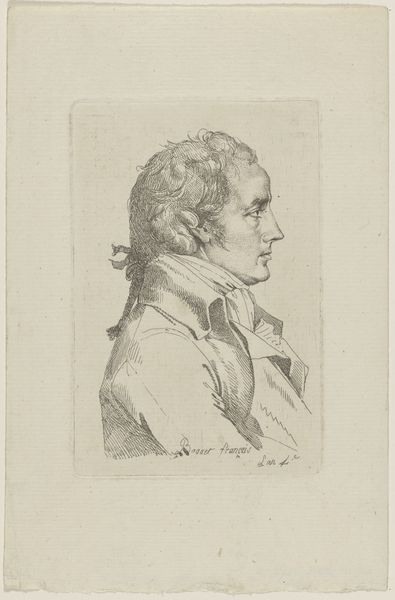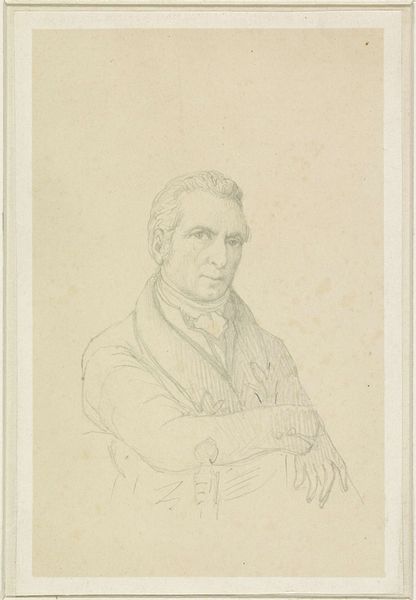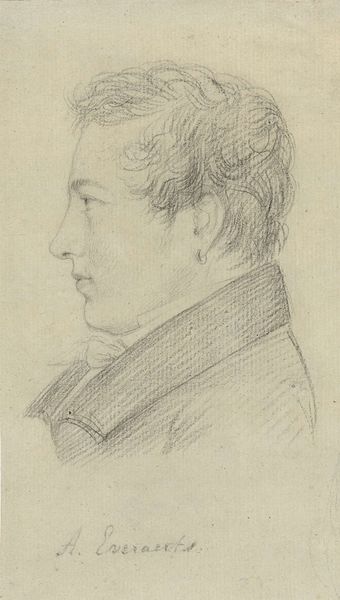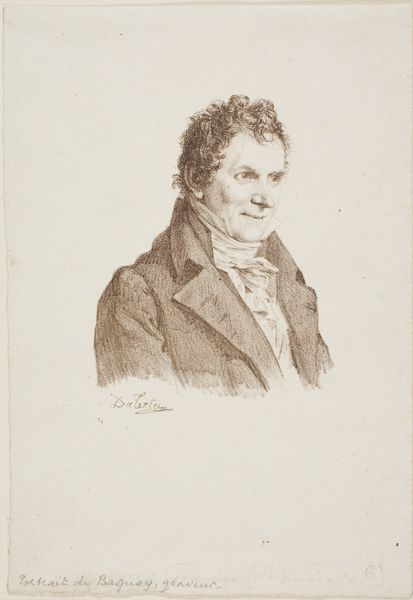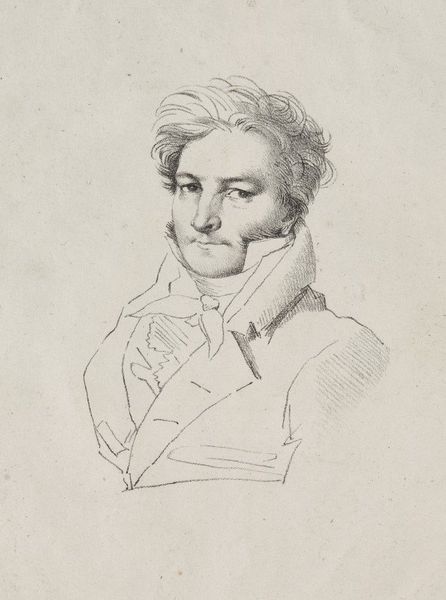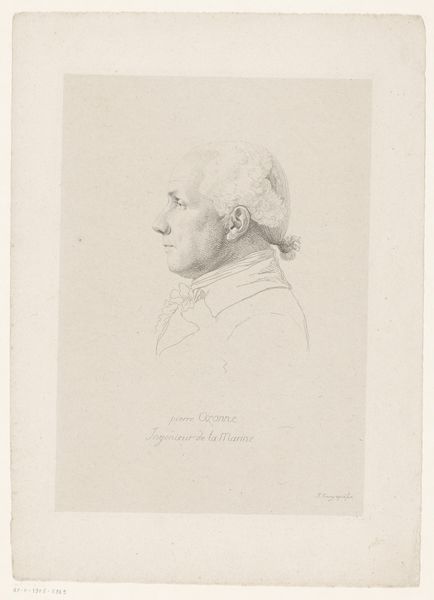
drawing, pencil
#
portrait
#
drawing
#
neoclacissism
#
pencil drawing
#
pencil
#
portrait drawing
#
academic-art
Copyright: Public Domain: Artvee
Curator: Before us is Jean-Auguste-Dominique Ingres’s portrait of Philippe Mengin de Bionval, rendered in pencil in 1812. Editor: It’s delicate, almost ephemeral. The hatching is so light it makes him seem like a ghost of a man. I am immediately curious about Ingres’s choice of materials. It feels intentional. Curator: Indeed, the neoclassical style evident here—the emphasis on line and form—reflects a period obsessed with rationality. Yet, Ingres’s portraiture, even when seemingly objective, cannot escape the subjectivity inherent in representing an individual, particularly within the socio-political context of post-revolutionary France. Editor: What strikes me, though, is that a pencil drawing like this wasn't simply produced—it needed specific pencils, paper. Who was manufacturing these materials? What sort of labor made such artistry even possible, and how did these economic structures frame artistic choices? Curator: Absolutely, and it is vital to interrogate these points. How does Bionval’s identity as a presumably wealthy bourgeois subject affect the manner in which Ingres portrays him? Ingres carefully crafts an image of refined society that may gloss over some of the more grim implications of its structure. Editor: Agreed. Consider, too, the craft of it—the sharp point of the pencil to make such fine detail. There is a physical action in that refinement that underscores both Ingres’s artistry and the material processes required. It’s a dance of production. Curator: Ingres presents the sitter as an emblem of a rising professional class. To think of how someone can become not just an "individual" but an identifiable node within overlapping fields of commerce and society. Editor: Seeing this level of fine art always triggers questions about how materiality itself informs the final piece. The softness, or seeming ephemerality, shapes its narrative force. Curator: By placing Ingres within this nexus of history and materiality, we unveil deeper layers of this seemingly simple drawing. The aesthetic qualities are revealed in the light of economic and sociopolitical undercurrents. Editor: Precisely! It transforms the artwork beyond being just a pretty picture; the drawing then becomes part of our discussion of larger social issues. Curator: I appreciate your materialist gaze. It helps me to look at the picture more objectively. Editor: Thanks! And your commentary enriches how this material perspective can shape and form conversations about artistic identity and output.
Comments
No comments
Be the first to comment and join the conversation on the ultimate creative platform.
